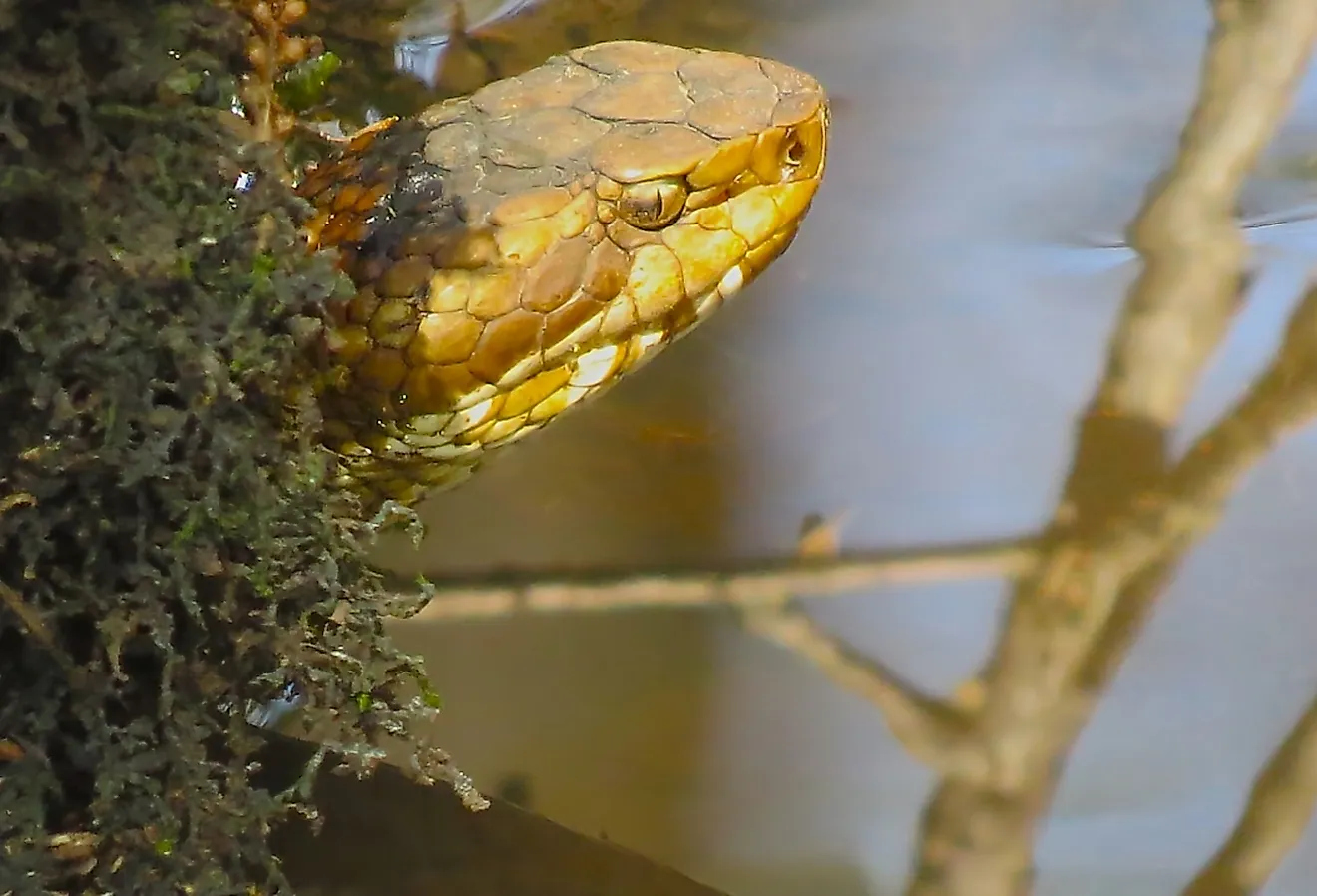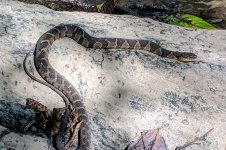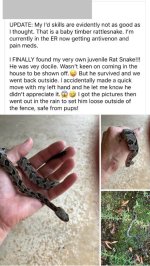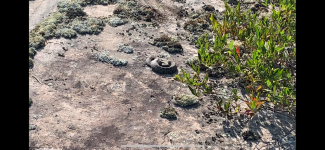I haven't seen too many snakes in the lakes, rivers and swamps I've paddled. I do recall seeing water moccasins (AKA cottonmouths) in Silver Springs River, Florida, as I was stepping out of the canoe at a landing. Here is a review of the most snake infested lakes in South Carolina—a wonderful canoeing state, which has everything from coastal paddling to blackwater rivers to whitewater rivers to Jurassic swamps.
"From cottonmouths basking on docks and copperheads prowling the shallows to rat snakes mingling near hiking trails, it is critical to know how to react when you come across one. By understanding where these reptiles thrive most, lake visitors can be more aware and prepared if venturing to areas with historically high snake concentrations. Safety precautions also take precedence when visiting the most snake-infested lakes in South Carolina."

 www.worldatlas.com
www.worldatlas.com
At the bottom of the article are links to other articles about the most snake infested lakes in Iowa, Indiana, Wisconsin and West Virginia.
"From cottonmouths basking on docks and copperheads prowling the shallows to rat snakes mingling near hiking trails, it is critical to know how to react when you come across one. By understanding where these reptiles thrive most, lake visitors can be more aware and prepared if venturing to areas with historically high snake concentrations. Safety precautions also take precedence when visiting the most snake-infested lakes in South Carolina."

The Most Snake Infested Lakes in South Carolina
To avoid unnecessary conflicts, learn more about the South Carolina lakes, which are reputed as hotspots for different snake species in the United States.
At the bottom of the article are links to other articles about the most snake infested lakes in Iowa, Indiana, Wisconsin and West Virginia.







